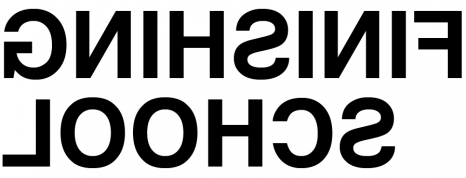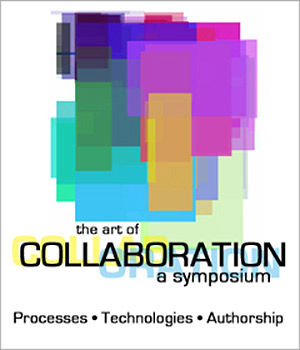
Hong Kong island, December 2009
series: collaboration
– from the series collaboration by Elo Vázquez, www.helloelo.net
the art of collaboration (UCSC)
UCSC’s Arts Division and Porter College presents
The Art of Collaboration:
Processes
Technologies
Authorship
Hosted by the Digital Arts and New Media MFA Program at the new Digital Arts Research Center (DARC), UC Santa Cruz
Thursday October 22, 4:30p-7:30p,
and Friday October 23, 9:30a-7:30p
http://danm.ucsc.edu/web/collaboration
UCSC’s Arts Division and Porter College are proud to present an interdisciplinary symposium investigating collaboration as a key concept in contemporary art and creative production.
Join more than twenty scholars, artists, filmmakers, game designers and theorists as they come together to discuss the meanings and cultural aspirations associated with collaboration, including non-hierarchical production, shared authorship, cross-disciplinary and trans-cultural approaches to research. By exploring the complexities of collaboration, this symposium challenges overdependence on intellectual individuality in favor of the non-territorial, collective, dialogic, participatory and relational.
Keynote Address:
“Enclosure Acts: Collaborative Practice in an Indian Village”
Grant Kester, Chair and Associate Professor of Art History in the Visual Arts Department at UC San Diego
Special Lecture co-presented with the UCSC Foundation Forum:
“Creativity: What I Don’t Know and What I Know”
Dr. Ed Catmull, co-founder of Pixar and president of Pixar and Disney Animation Studios
In three panel discussions, collaborative work will be considered as an alternative to the notion of individual authorship in intellectual and creative endeavors.
Panel participants include:
Joline Blais
Dee Hibbert-Jones
E.G. Crichton
Marsha Kinder
Sharon Daniel
John Jota Leaños
Claudia Eipeldauer of WochenKlausur
Chip Lord
Sean Fletcher & Isabel Reichert
Michael Mateas
Jennifer A. González
Susana Ruiz
Melissa Gwyn
Warren Sack
Bassam Haddad
Gustavo Vazquez
David Evan Harris
Noah Wardrip-Fruin
Jon Ippolito
The event also includes artistic presentations of collaborative works of art by students and faculty, as well as a joint reception with Sesnon Gallery (Porter College) to celebrate Full Disclosure, an exhibition featuring collaborative projects by UCSC arts and science faculty and lab researchers.
This event is free and open to the public.
Information and registration at http://danm.ucsc.edu/web/collaboration
Organized by Margaret Morse and B. Ruby Rich and coordinated by Soraya Murray, this symposium is sponsored by UCSC Arts Division, UCSC Digital Arts and New Media MFA Program, the Porter Festival Grant, the Arts Research Institute, the Academic Senate Committee on Research (COR), the Center for Art and Visual Studies (CAVS), the UC Santa Cruz Foundation and Awake Media.
the fluctuating moving back and forth of “i”
“A ball is not an ordinary object, for it is what it is only if a subject holds it. Over there, on the ground, it is nothing; it is stupid; it has no meaning, no function, and no value. Ball isn’t played alone. Those who do, those who hog the ball, are bad players and are soon excluded from the game. They are said to be selfish [personnels]. The collective game doesn’t need persons, people out for themselves. Let us consider the one who holds it. If he makes it move around him, he is awkward, a bad player. The ball isn’t there for the body; the exact contrary is true: the body is the object of the ball; the subject moves around this sun. Skill with the ball is recognized in the player who follows the ball and serves it instead of making it follow him and using it. It is the subject of the body, subject of bodies, and like a subject of subjects. Playing is nothing else but making oneself the attribute of the ball as a substance. The laws are written for it, defined relative to it, and we bend to these laws. Skill with the ball supposes a Ptolemaic revolution of which few theoreticians are capable, since they are accustomed to being subjects in a Copernican world where objects are slaves.
[..]
this quasi-object that is a marker of the subject is an astonishing constructer of intersubjectivity. we know, through it, how and when we are subjects and when and how we are no longer subjects. “we”: what does that mean? we are precisely the fluctuating moving back and forth of “i”. the “i” in the game is a token exchanged. and this passing, this network of passes, these vicariances of subjects weave the collection. i am i now, a subject, that is to say, exposed to being thrown down, exposed to falling, to being placed beneath the compact mass of the others; then you take the relay, you are substituted for “i” and become it; later on, it is he who gives it to you, his work done, his danger finished, his part of the collective constructed. the “we” is made by the bursts and occultations of the “i”. the “we” is made by passing the “i”. by exchanging the “i”. and by substitution and vicariance of the “i”.
That immediately appears easy to think about. Everyone carries his stone, and the wall is built. Everyone carries his “I,” and the “we” is built. This addition is idiotic and resembles a political speech. No. Everything happens as if, in a given group, the “I,” like the “we,” were not divisible. He has the ball, and we don’t have it any more. What must be thought about, in order to calculate the “we,” is, in fact, the passing of the ball. But it is the abandon of the “I.” Can one’s own “I” be given? There are objects to do so, quasi-objects, quasi-subjects; we don’t know whether they are beings or relations, tatters of beings or end of relations. By them, the principle of individuation can be transmitted or canget stuck. There is something there, some movement, that resembles the abandon of sovereignty. The “we” is not a sum of “I”‘s, but a novelty produced by legacies, concessions, withdrawals, resignations, of the “I.” The “we” is less a set of “I”‘s than the set of the sets of its transmissions. It appears brutally in drunkenness and ecstasy, both annihilations of the principle of individuation. This ecstasy is easily produced by the quasi-object whose body is slave or object. We remember how it turns around the quasi-object, how the body follows the ball and orients it. We remember the Ptolemaic revolution. It shows that we are capable of ecstasy, of difference from our equilibrium, that we can put our center outside ourselves. The quasi-object is found to have this decentering. From then on, he who holds the quasi-object has the center and governs ecstasy. The speed of passing accelerates him and causes him to exist. Participation is just that and has nothing to do with sharing, at least when it is thought of as a division of parts. Participation is the passing of the “I” by passing. It is the abandon of my individuality or my being in a quasi-object that is there only to be circulated. It is rigorously the transsubstantiation of being into relation. Being is abolished for the relation. Collective ecstasy is the abandon of the “I”‘s on the tissue of relations. This moment is an extremely dangerous one. Everyone is on the edge of his or her inexistence. But the “I” as such is not suppressed. It still circulates, in and by the quasi-object.”
from michel serres, the parasite, “theory of the quasi-object”
(many thanks to sean dockray who brought up this text during his talk last week at program, and for making it available here. michalis also mentioned serres last week in the text he wrote for ap’strophe’s new release ‘objects sense objectes‘. this is also meant as a response to this.)
kein collaboration workshop
Submitted by fls on Sun, 2006-10-08 19:21
Collaboration is one of the guiding terms of an emergent political sensibility in which certain collectivities and mutalities are being redefined as modes of affectual politics. Collaboration, literally, means working together with others, especially in an intellectual endeavour. The workshop from October 7-13, will elaborate on the actual differences that shift between the various coexisting layers of meaning and investigate the impact of a contemporary concept of collaboration — at both, theoretical and practical levels. What is at stake is the very notion of establishing a new understanding of the term ‘together’ within a dynamic of ‘working together’.
and also of note is the about of the kein community, which in certain ways, sounds very familiar (though perhaps more directly political, more clear, and more thought-out) with ours…
KEIN community has nothing in common. On the contrary, KEIN.ORG aims to bring people together who would not meet otherwise or under regular circumstances. Instead of a common ground or shared agenda KEIN.ORG is about illegitimate links, unlikely encounters, unexpected collaborations.
KEIN USERS meet on the basis of a virtual infrastructure that is built by them and not for them. There are no technicians or employees to be blamed, but there are teams of volunteering developers, administrators and operators involved who collaborate on an ad-hoc basis. The continuity and quality of service is guaranteed by KEIN users and KEIN collaborators themselves rather than by meaningless certificates.
KEIN.ORG is an open-ended and self-learning environment. It is not inhabited by unencumbered users pampered with promises and fortified by contracts. The goal is rather to deal with dependencies in the most creative ways and, on this basis, multiply experiences, skills, knowledge among those who really use and appreciate KEIN services.
KEIN.ORG collaborates with a variety of institutions, initiatives, groups and individuals from the fields of architecture, fine art, performance art and media art, antifascist activist groups, migrant self-organizations, contemporary dance and choreography, union and labor activists, pop culture, urban research, youth and education, museums and universities – just to name a few of the most obvious categories.
KEIN.ORG is currently hosting more than 500 internet domains, about 200 content management systems and countless mailinglists from 5 to 5000 subscribers, as well as numerous email-accounts.
Although we understand the need, KEIN.ORG is not the place where you can get an anonymous account. We prefer to work with users to whom we have at least a certain relationship. If you are looking for anonymous, automatic email accounts, please have a look at: http://no-log.org or http://riseup.net or related websites!
bricolabs
Bricolabs describes itself on its website as a distributed network for global and local development of generic infrastructures incrementally developed by communities. A global platform to investigate the new loop of open content, software and hardware for community applications, bringing people together with new technologies and distributed connectivity, unlike the dominant focus of IT industry on security, surveillance and monopoly of information and infrastructures.
In its decentralized and distributed final presentation (many male voices dispersed in the dark audience setting of the cinema) it felt like a journey to learn what Bricolabs had been going through over the past days. It seemed to be more of a non-definition than a definition.
As a starting point, the Bricoleurs had transformed the network image of Winter Camp into a mesh-network which they perceived more representative of their way of working. Like some other networks, Bricolabs found it problematic to define one network contact – or as Winter Camp described it, a co-ordinator – for Bricolabs it equaled to defining a leader – and in their opinion, representation of networks should be approached differently.
We don’t define Bricolabs, it would die. We describe it.
Bricolabs started and came together in a rather unplanned and spontaneous way and its final presentation mirrored that process. Its mailinglist membership is big (around 400 if I am not mistaken), and many of the Winter Camp participants and organizers are bricoleurs too.
Bricolabs is a network of autonomous actors, agents, with all sorts of organisations and groups involved. It shares a common instinct of things and methods, and not until the Winter Camp had seen a need to articulate these or clarify them. Rather than talking, Bricolabs is about doing; and who contributes to which part in this doing is not really relevant.
Back to the dispersed mystic voices in the dimly lit Studio K Cinema:
Nobody in the network needs a label, no one needs validation.
Bricolabs has no boundaries, it has a centre of gravity around which projects can happen.
Is it a network? If it is a network at all, it is an open network.
Is it a smell? What kind of smell? The smell of Palo Santo wood? Of Mandarins? The smell of home?
Is it a colour?
Who can define the future of Bricolabs?
Who can define its qualities?
Autonomy
Knowledge
Imagination
(BINGO!)
Harmony?
Empowerment?
[taken from the Bricolabs “Final Day Presentation” at Wintercamp ’09]
from “The War Against Preterrorism: The ‘Tarnac Nine’ and The Coming Insurrection”
On 11 November 2008, twenty French youths are arrested simultaneously in Paris, Rouen, and in the small village of Tarnac (located in the district of Corrèze, in France’s relatively impoverished Massif Central region). The Tarnac operation involves helicopters, one hundred and fifty balaclava-clad anti-terrorist policemen and studiously prearranged media coverage. The youths are accused of having participated in a number of sabotage attacks against the high-speed TGV train routes, involving the obstruction of the train’s power cables with horseshoe-shaped iron bars, causing material damage and a series of delays affecting some 160 trains. Eleven of the suspects are promptly freed. Those who remain in custody are soon termed the ‘Tarnac Nine’, after the village where a number of them had purchased a small farmhouse, reorganised the local grocery store as a cooperative, and taken up a number of civic activities from the running of a film club to the delivery of food to the elderly. In their parents’ words, ‘they planted carrots without bosses or leaders. They think that life, intelligence and decisions are more joyous when they are collective’.
(please read full text at support the tarnac 9)
one click leading to another, temporary services
a compilation of quotes about collaboration from a variety of sources and practices, from temporary services
don’t like to call yourselves a group?
“Fortunately there are many options. Here are some of the many ways that configurations of multiple people working together have been described:
actors
advocates
affiliates
alarmists
alliance
allies
alumnae
apologists
apostles
assembly
associates
association
audience
band
believers
bigots
brotherhood
bunch
cabal
cabinet
cast
castaways
caste
champions
choir
circle
clan
class
classmates
clergy
clique
club
collaborative
collective
college
colloquium
combatants
committee
commune
community
company
comrades
conclave
confederation
confreres
congregation
convention
cooperative
coterie
council
court
cousins
crew
crowd
culture
defenders
delegation
diaspora
diocese
directorate
disciples
elders
enclave
endorser
enemies
enthusiasts
estate
family
fanatics
fans
fathers
federation
fellowship
felons
financers
firm
followers
forum
friends
givers
group
groupies
hangers-on
heirs
hobbyists
homeless
household
humanity
humankind
idolates
inhabitants
judiciary
justifiers
kinfolk
klatch
laity
league
legislative
losers
marriage
members
mentors
ministry
mob
multitude
network
orchestra
order
outfit
panelists
participants
participator
party
passersby
people
people
playboys
players
playgoers
populace
population
posse
prisoners
protectors
race
racists
republic
revolutionaries
school
sect
sisterhood
sisters
society
specialists
specialists
squad
squatters
state
successors
supporters
survivors
suspenders
syndicate
team
telephoner
terrorists
thespians
throng
tribunal
union
unit
university
upholders
victims
victors
worshipers”
from www.groupsandspaces.net, a very interesting list of groups (and spaces), compiled by temporary services
and this is from their ‘additional notes’ about the list: “Some groups on this list began as three or more people but are now administered by one or two persons or have changed focus; these groups are still listed in “Groups of 3 or More People” in the event that they may grow again. Some groups were started by two people but quickly grew and remained a larger group; these groups are primarily in “Groups of 3 or More People” as well. “Groups of 1 or 2 People” are groups that are generally administered by one or two people but commonly execute projects with additional people outside of the group and/or use a group name to both complicate the authorship of their work and insist on the fact that all art making is collaborative at some point, even if one chooses to hide this.
We have not included studios and ateliers that are named for an individual artist (for example, Atelier Van Lieshout or Acconci Studios). These arrangements typically have a more hierarchical structure than most of the groups included in this list and don’t necessarily celebrate the more egalitarian forms of creation that come from collaboration. This list also excludes individual artists who maintain individual authorship but work as a collective primarily to share resources, information and opportunities (for example, a women’s photography collective). The focus is on people who produce collaborative projects under a group name. Pairs of artists working together under a group name are included. Collaboratives of two people that use the artists’ actual names (for example, Komar and Melamid) are not. These personally named collaborations imply a closed structure rather than a platform for collaboration that could potentially expand to include others, or endure a change of membership.”
some groups here, some relevant books here
finishing school

Formed in late 2001, Finishing School is a collective identity that explores art, design, and technology through interventions that combine praxis, play, and activism. Finishing School attempts to demystify the experience of cultural production and engage viewers through various participatory models. Past projects have included Public Interaction Objects (2006), a series of low-tech participatory objects including meet/greet, a semi-autonomous drone designed to move through public spaces and greet individuals with multilingual salutations; The Patriot Library (2003), a working library that provides access to books, periodicals, and other media considered “dangerous” by the United States government; and Saturday School (2001), a temporary, nomadic teaching institution offering multidisciplinary classes that dissect, question, and illuminate various aspects of everyday life.



